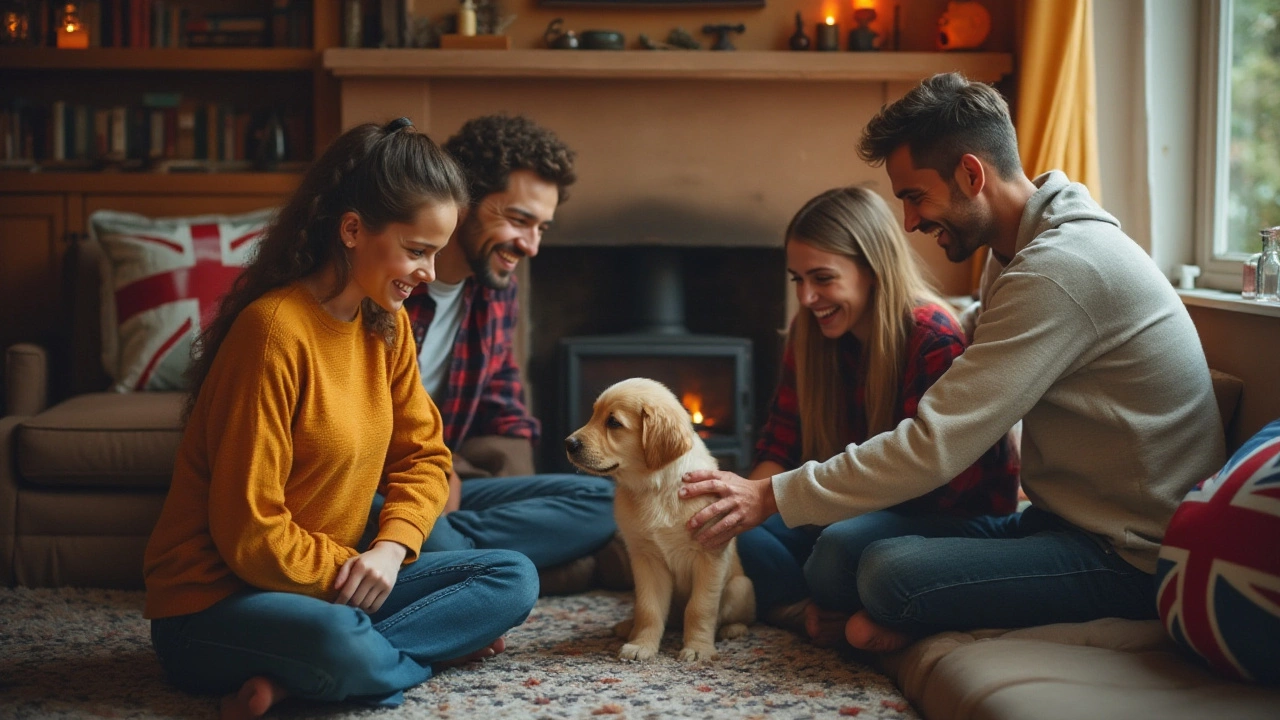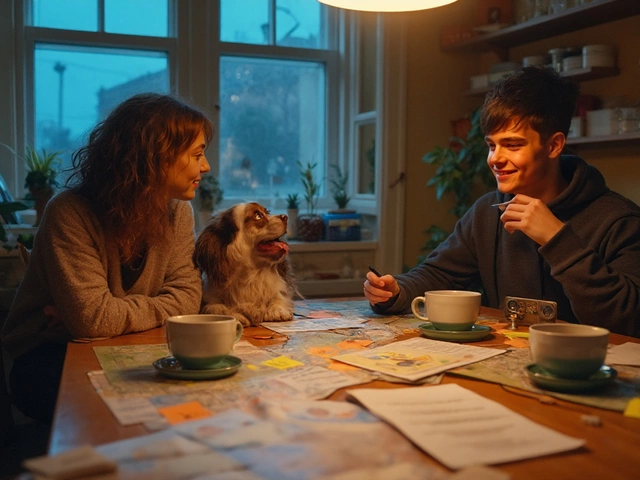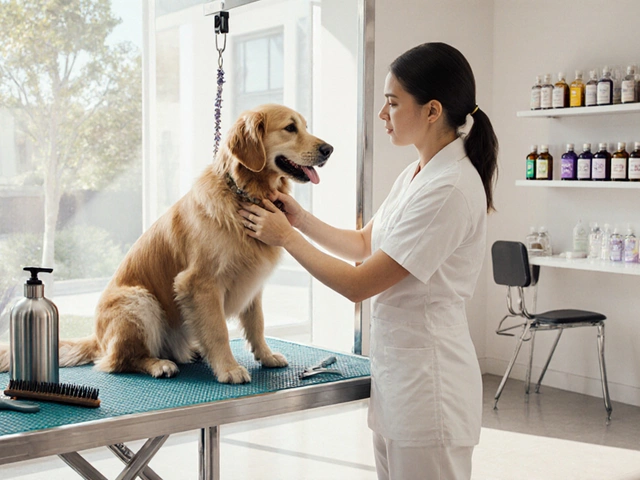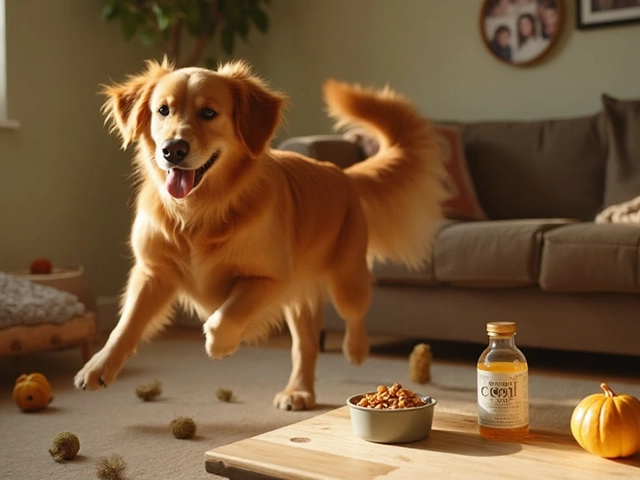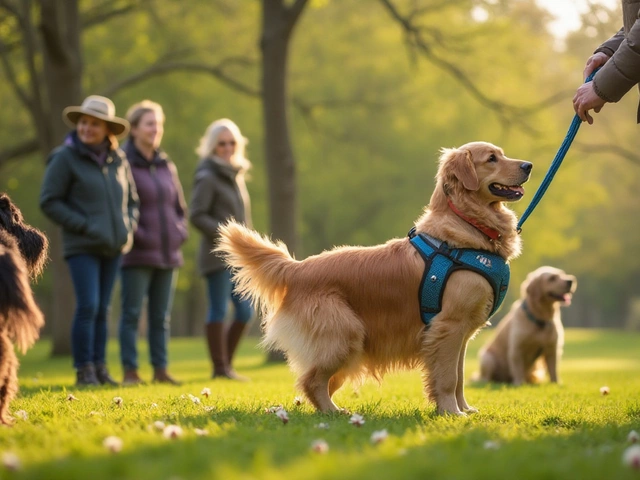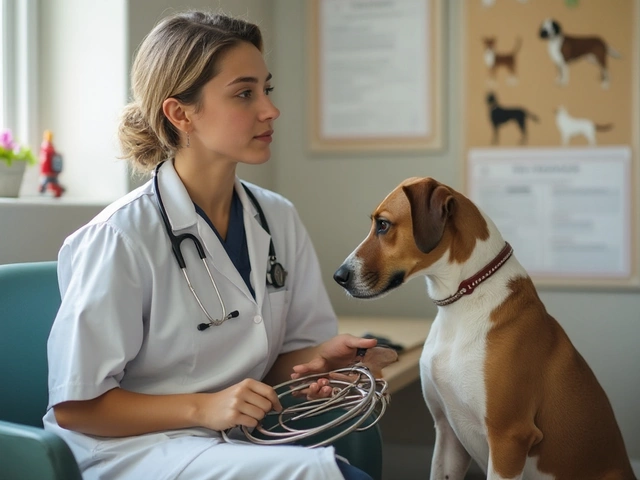Embarking on the exciting journey of training your new 8-week-old puppy sets the foundation for a well-behaved and happy companion. These early weeks are vital for establishing trust and communication, and teaching basic commands is a great starting point. At this stage, your playful pup is eager to learn and interact, making it an ideal time to introduce fundamental commands.
From 'sit' to 'stay', these commands foster good manners and safety. Pairing these lessons with engaging toys keeps your puppy's attention focused while also making learning a fun experience. With the right balance of patience and persistence, anyone can cultivate a pup who not only listens but thrives in its new environment.
- Importance of Early Command Training
- Basic Commands for Puppies
- Integrating Commands with Toys
- Common Training Pitfalls
- Tips for Consistent Reinforcement
Importance of Early Command Training
Training an eight-week-old puppy in commands forms the cornerstone of their development and is a rewarding endeavor for any pet owner. From a behavioral standpoint, these early weeks are when your puppy is most receptive to learning new concepts. At this tender age, their brains are like sponges, soaking up information eagerly and voraciously, which means introducing basic commands can have lasting benefits. Without setting limits and teaching essential puppy training commands, your they might develop frustrating tendencies like excessive barking or destructive chewing as they mature.
Early command training not only instills good behavior but also fortifies the bond between you and your puppy. This process serves as a foundation for a mutually trusting and respectful relationship. In a fascinating study by the University of Lincoln, researchers found that puppies trained with consistent commands at an early age were more socially adaptable and displayed a higher degree of obedience as they matured. Including commands such as 'sit', 'stay', and 'come' can be immensely beneficial in everyday settings, like preventing your dog from dashing onto a busy street or chewing on your favorite shoes.
"Puppy training isn't just about teaching commands; it's about guiding them into becoming confident, happy, and sociable adult dogs," states Dr. Karen Becker, a respected veterinarian and animal behaviorist.
Training with commands also helps ease a puppy’s anxiety. A structured routine, underpinned by the consistent use of basic commands, gives them a sense of security and predictability. A puppy that understands their role within their pack—human family included—feels more at ease. This approach significantly decreases the likelihood of stress-induced behaviors. For the training to be effective, the repetition and positive reinforcement must be employed consistently. Giving treats, vocal praise, or engaging puppy toys can serve as wonderful motivators and turn the process into a fun activity for your pup.
Not to be overlooked, training an eight-week-old in simple commands can also promote physical health. By encouraging activities like fetching or playful recall commands, young puppies engage in vital exercise that promotes muscle development and coordination. An active puppy is typically healthier and less prone to obesity and related health concerns.
Finally, committed command training from the onset enhances communication between a dog and its owner. This effective way of interacting establishes clear expectations and reduces the occurrence of misunderstandings or frustration on both sides. Once a puppy realizes that responding to a command results in positive outcomes, they begin to enjoy the learning process, making future training sessions more successful.
Basic Commands for Puppies
Training an 8-week-old puppy initiates one of the most delightful phases in a dog owner’s life, filled with playful antics and the joy of learning. At this tender age, puppies are especially receptive, making it the opportune moment to start with core commands. Teaching your pup basic commands like sit, stay, come, and leave it not only builds a foundation of good behavior but also forms a language of communication between you and your puppy. Among these, 'sit' is perhaps the simplest yet most effective command to start with, often serving as the cornerstone of obedience training.
Have your puppy's favorite treats on hand, as positive reinforcement is key. Break the treat into small pieces that are easy to consume. Hold a treat close to your pup's nose, allowing the scent to capture its attention. Then, slowly lift the treat over its head. As the pup tries to follow the treat with its eyes and nose, the natural tendency is to lower its bottom to the floor. Once they are in the sitting position, immediately reward them with the treat and a cheerful 'good sit!'. Repetition and consistency are vital, so practice this several times a day.
Establishing the 'Stay' Command
As your pup begins to master 'sit', you can introduce the 'stay' command. This builds on their ability to remain in place, strengthening patience and focus. Start by asking your puppy to sit. Once settled, hold your hand open in front of you, palm facing them, and firmly say 'stay'. Initially, only require a short pause before rewarding them. Gradually extend the time your puppy is expected to stay. Always reward them with treats and praise to reinforce the behavior. As they excel, introduce mild distractions like holding a toy or stepping back before returning to them.
Teaching 'come' offers both convenience and safety, useful for situations where you need your dog to return quickly. Begin by crouching down to the floor to encourage your puppy, using a happy, inviting tone while saying 'come'. When they respond, reward them with enthusiasm and treats. Unlike other commands, this one should always be associated with positive outcomes, ensuring the puppy views coming to you as the most rewarding choice.
“The best way to communicate with your dog is through consistency and positive reinforcement,” advises Dr. Sophia Yin, a renowned veterinary behaviorist known for her expertise in animal training.
Mastering 'Leave It' for Safety
Finally, the 'leave it' command is vital for keeping your puppy out of trouble, whether they're inquisitively sniffing something on the ground during walks or exploring at home. Begin by showing your dog a treat and, as they attempt to take it, cover it with your hand while saying 'leave it'. Once they back off, reward them with a different treat from your other hand. Over time, your puppy will learn to avoid the initial object, understanding 'leave it' as a cue to stop pursuing something potentially harmful.
Puppies are naturally curious and energetic, so training should be kept brief and engaging to hold their attention. Always end sessions on a positive note, ensuring that your training leaves you both feeling successful. Remember, patience is key; every dog learns at its own pace, so celebrate the small victories along the way. With commitment and love, your puppy training efforts will lead to a well-mannered companion ready to navigate the world with you.
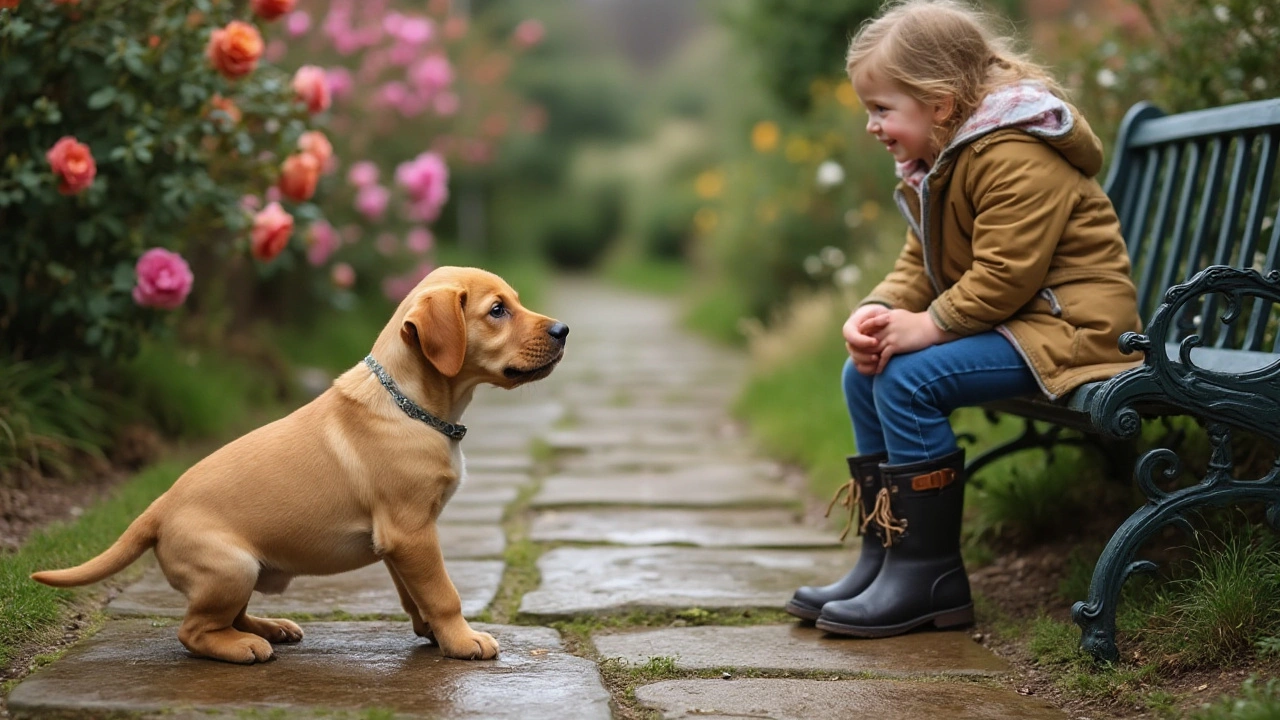
Integrating Commands with Toys
Utilizing toys while teaching basic puppy training commands can transform the learning process into a delightful experience for both you and your furry friend. At this developmental stage, integrating play with instruction helps sustain your puppy’s attention and energy. Toys like squeaky balls or chewy rings can capture their curiosity while reinforcing behaviors such as 'fetch', 'drop it', and 'come'. They serve as both an incentive and a reward, encouraging your budding canine to act in ways that become habitual.
The types of toys you choose can have a profound impact on learning outcomes. Interactive puzzles can stimulate your pup's cognitive skills, particularly when embedded with treats that they need to 'sniff out' or problem-solve how to reach. This not only enhances their obedience to commands but also nourishes their natural inclination to explore. Tuggers, on the other hand, aligned with commands like 'leave it' or 'give', teach restraint and control—key skills for any pup. Remember, each toy can serve a function beyond play by being a tool to reinforce desired behaviors.
Experienced trainers, like Cesar Millan, often emphasize that "Play is crucial for a puppy’s learning journey, teaching not just commands, but crucial social skills."
Let’s consider toys as a medium for reinforcing obedience commands: When training 'fetch', a ball becomes an obvious choice. Start by gently tossing the ball a short distance while reinforcing the command. Each successful act of bringing the ball back is rewarded with praise or a treat. Similarly, practice 'drop it' to encourage them to release the toy voluntarily. The key to success is consistency and patience; always using the same word with the same action reinforces connections in their developing minds.
For a playful exercise in self-control, incorporate toys during 'stay' training sessions. Challenge your puppy by placing their favorite toy just out of reach. Verbally reward them the moment they refrain from lunging toward the toy, gradually increasing the duration of the 'stay' command. Remember to maintain a supportive tone and ensure these interactions remain light-hearted and rewarding—an important balance for puppies who are in the early stages of developing their skillset.
Would you like structured guidance? Here's a quick list of effective toy-command pairings:
- Use a ball for 'fetch' and 'come'.
- Soft tug toys work with 'drop it' and 'leave it'.
- Puzzle toys help 'stay', by holding their focus with the promise of a treat.
According to recent studies, when puppies engage in regular play-focused training sessions, they show higher obedience rates and are often more socially adaptable, highlighting how puppy toys are remarkable aids in teaching basic individuals commands. By weaving together toys with training, you not only make learning engaging but also forge a tighter bond grounded in mutual trust and respect.
Common Training Pitfalls
Training your 8-week-old puppy can be a rewarding experience, but it's not without its hurdles. Understanding and avoiding common training pitfalls can make the process smoother for both you and your pup. One frequent mistake is inconsistency in commands. A puppy needs a clear and consistent message to understand what's expected. If you switch between commands or allow exceptions, your puppy will get confused, thinking that a behavior that was permitted once is always okay. Consistency helps in reinforcing the basic commands like 'sit' and 'stay', thus setting a reliable foundation for your puppy's learning.
A common struggle among puppy owners is being impatient with results. Training takes time and patience; expecting instant obedience isn't realistic. A puppy's attention span is relatively short, and multiple short training sessions are often more effective than one lengthy one. Overwhelming your puppy with all commands at once can lead to stress and burnout. Prioritize the most important commands, such as 'come' or 'leave it', which ensure both good manners and safety, especially when paired with engaging puppy toys to keep their attention.
Many trainers overlook the power of positive reinforcement. Puppies learn best in environments filled with encouragement rather than fear of punishment. Celebrate small successes with treats or praise to maintain a positive association with training sessions. Avoid negative energy, such as shouting or physical corrections, as they can damage the bond you're trying to create with your new friend. Engaging with your pup using positive reinforcement strategies builds trust and motivates them to follow your guidance eagerly.
According to renowned animal behaviorist Dr. Sophia Yin, "Dogs can learn with positive reinforcement but can quickly become fearful or stressed with constant reprimands. Patience and kindness are key."
Distraction is another pitfall in the training phase. Puppies are naturally curious and can easily lose focus. Training in a quiet, distraction-free environment will help them concentrate on the task at hand. Gradually introduce distractions as your puppy becomes proficient with the commands. This approach ensures that your puppy can obey commands even in a lively environment, like a park. Remember, their attention is often piqued by their surroundings, so patience is necessary as they learn to focus amidst distractions.
Lastly, remember the importance of appropriate expectations regarding puppy behavior relative to their age. Puppies will test boundaries naturally as part of their development. It's crucial to give them room to explore and make mistakes while navigating their world. Owners who keep realistic expectations regarding what their puppy can achieve according to its developmental stage often experience more success. Use play, with the help of toys, as training offshoots to blend learning with fun, ultimately leading to a well-rounded and happy puppy.
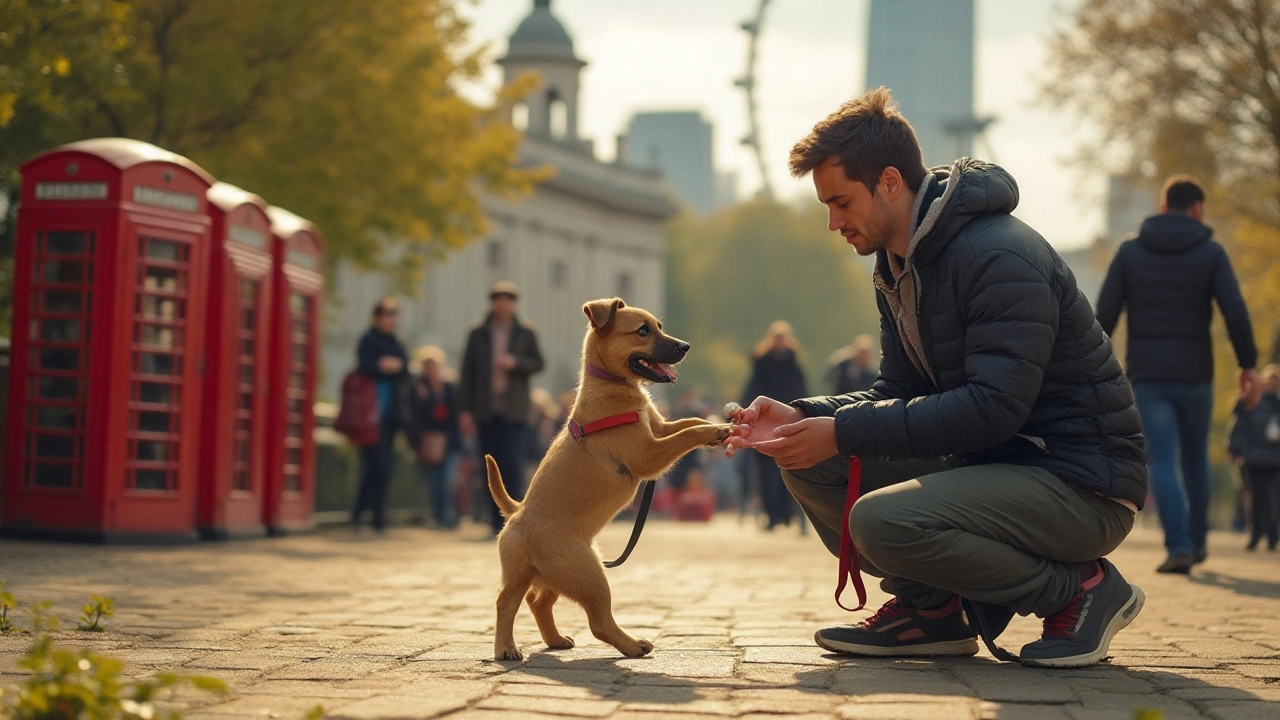
Tips for Consistent Reinforcement
Consistency is the backbone of any successful puppy training regimen. Just like building a strong relationship, teaching commands effectively demands patience and unwavering consistency. Every family member should be on the same page about what commands are being taught and how to reinforce them. A puppy thrives on routine, so keeping commands and responses consistent ensures they learn what is expected of them. Use the same words and actions during training sessions, and remember, your puppy is much like a sponge at this stage, absorbing everything around them.
When you introduce a new command, make sure to practice it several times a day. Short, frequent sessions are much more effective than long, tedious ones. Puppies have short attention spans, and keeping sessions engaging and brief maximizes their learning potential. Remember to remain calm and patient, even if your puppy seems distracted. If you find yourself getting frustrated, it's a good idea to take a break until both you and your puppy are in a positive frame of mind. This approach reduces stress for both parties and maintains a healthy bond.
Another critical aspect of reinforcement is positive feedback. Rewards can be tangible such as treats or toys, or intangible like affection and praise. Studies have shown that positive reinforcement is one of the most effective teaching methods for dogs. According to research, the way you respond when your puppy successfully follows a command can significantly affect how quickly they learn and their willingness to repeat that behavior.
“Repetitive, positive reinforcement solidifies desired behaviors in puppies and dogs alike, establishing reliable responses,” notes canine behaviorist Dr. Martin Hawley.Whether it’s a tasty treat or showering them with verbal praise, make sure the reward is immediate to create a clear connection for the puppy.
Tracking your puppy's progress can also be a valuable tool. Keeping a journal or notes about what commands you’re working on and the puppy's progress is a way of marking milestones and figuring out which techniques work best. This record helps adjust training strategies if needed, ensuring you’re always adapting to your puppy’s needs and keeping the training fresh and relevant.
Also, integrating toys during training can make the process more engaging for your puppy. Toys not only serve as rewards but also as tools to enforce commands like 'drop it' or 'fetch'. A combination of treats and toys might just do the trick in ensuring your pup stays motivated and eager to learn. Puppies often associate play with positive emotions, making it a natural choice for reinforcement.
Finally, remember that setbacks are part of the journey. Every puppy learns at its own pace. Some commands might be more challenging than others, depending on your pup’s breed and personality. Stay consistent in your efforts, keep your expectations realistic, and maintain a nurturing environment. This conscientious approach fosters a strong, communicative relationship, ensuring you and your puppy enjoy many happy years together.

